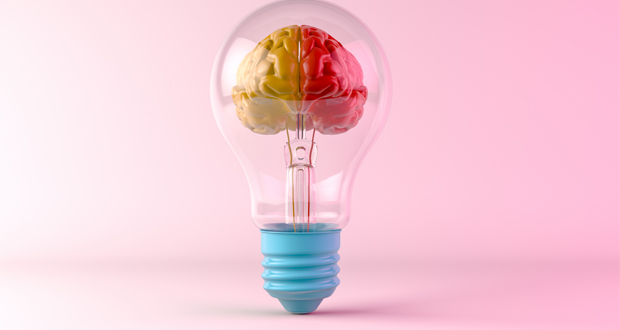Is it possible for a teacher to “feel” the motivation of a student? The kind and intensity of motivation? It depends on the empathetic skills of the teacher. Usually the responses of the student – cognitive, behavioural and emotional – help the teacher to understand whether a student is motivated or not. If the student’s responses are prompt and focused, and he/she is enthusiastic, the teacher assumes that the student has the right kind of motivation for learning.
But that way of understanding student motivation is only peripheral. The student’s responses fluctuate with many psycho-physical-environmental factors and need not be a direct reflection of student motivation. How then can a teacher make sure their teaching is really feeding the motivational energies of the student? The question matters as understanding the fundamental dynamics of student motivation helps a lot. Teachers can create the best classroom contexts if they know clearly “what can keep the students motivated”.
Understanding student motivation is not simply a matter of identifying the factors which trigger it. What helps in sustaining the student is far more important than what triggers the interest or curiosity of the learner. Sustaining curiosity is a hard task given the inherent limitations of executive brain functions of humans.
Yet, even when the motivation is kept unabated, it may not help in accomplishing the intended goal or objectives. There might be dissipation of motivational energies. The energy just scatters around without proper orientation, and the student fails to regulate or direct their motivation/interest along the right channels. Hence direction is as important as the intensity of motivation.
Age-old problem
Educational psychologists and researchers in human sciences keep on brainstorming the age-old problem of keeping the student motivated. Their effort has given birth to many motivational theories. The teaching community devoured those theories and tried their best to translate them into classroom practices. Alas, stories of teachers who floundered in the attempt are higher than those who succeeded.
Actually, motivational theories aren't supported by concrete evidence to prove their veracity. The motivational researchers rely on the subjective experiences of the individuals. Research outcomes based on the subjective experiences of students regarding the kind and intensity of the motivation usually do not take into account all environmental or cultural influences (say, the influence of technology) on student motivation. Perhaps, this might be one of the reasons for teacher-failure in applying these theories for motivating students.
But the time for concrete evidence has come. When a teacher wants to know the factors that ensure greater student involvement in academics they can refer to what happens in the student's brain during a particular interpersonal classroom context. Research in motivation has advanced to a level where scientists can identify and produce visual evidence for neural pathways underlying motivation. It seems theories of motivation aired so far have to check for their compatibility with corresponding neuro-scientific evidences. Theories that can make a one-one correspondence with neuroscientific evidence are likely to survive. Others are highly likely to expire in the long run.
Motivation: what does neuroscience have to say?
In the book titled Research development in neuroscience: Research on human motivation Sung-il Kim and his colleagues depict three “core brain circuits” involved in motivation: 1) reward circuit; 2) value-based circuit; and 3) goal-based circuit.
When, how and which brain regions (circuits) are activated, and what aspects of an individual’s motivated behaviour corresponded with the circuit activation, can be easily answered by modern brain mapping/imaging techniques. The author’s attempt to expound on such queries is praiseworthy. It throws light on the effectiveness of the strategies we educators resort to kindle the student motivation and keep it burning throughout their academic life.
Reward circuit
The reward circuit in the brain is a network connecting Ventral Tegmental Area (VTA), the amygdala, and three core structures in striatum – the caudate, putaman and nuclear accumbens. The reward circuit is activated when cues that predict reward grab the attention of the student. The anticipation of reward excites the ventral striatum and facilitates voluntary movement. Activation of the reward circuit results in the initiation of action.
All educators know that praise, recognition or any tangible reward will stimulate interest and energise the student to initiate the action in question. But the “reward approach” and “remaining in action for sufficient time” (for experiencing joy derived from it) are not the same. Neural pathways activated in both are not identical; which means that the reward approach behaviour need not always promise that the student will stay motivated during the execution of the action and remain in it for a sufficient period.
So the possibility of sustaining motivation to pursue the action beyond the initial phase of interest is meagre if the student initiates learning for the praise or reward he/she is likely to receive from parents/teachers. Once the reward is withdrawn interest dampens. In other words, extrinsic motivation based on the reward system need not always segue into self-regulated sustained intrinsic motivation. So then, what helps in sustaining the motivation?
Evaluation circuit
Only those who derive some benefit from a particular action will remain in it for a sufficient period of time. The decision-making process is fundamental for staying motivated throughout the action. The student exercises a host of value-based decisions and decides whether to stay in the action or not. An extensive network of brain regions including PFC, striatum, amygdala and insula are active in the process.
The dynamics of value-based decisions implicates that the core of sustained motivation is the “value” or “benefit” – intellectual, material or emotional – the individual derives from the action. If the process of learning fails to yield any kind of value the learner will recoil from the task. Perceived value is the reason for remaining in the task. For sustained motivation educators must be able to provide a reason for being in the act of learning. That reason must not be something vague like the promise of a good future. It must be tangible in the present. It must be experiential like “felt sense of agency” or “intellectual excitement/joy” one derives while treading through the process of learning.
Self-regulation circuit
Intense or sustained motivation need not necessarily translate into planned action or help in the accomplishment of the goal if the individual lacks that acumen to regulate their motivation. In his book, Sung-il Kim puts forward this question:
“How can the student hold on to their motivation towards a goal when tempting urges (perhaps more pleasure yielding) compete with the goal?”
Many motivated individuals end up not reaching their goals due to compulsive choices or actions they make during their journey towards the goal. According to neuroscience, the choice of immediate reward excites ventral striatum, delayed reward activates dorsolateral prefrontal cortex (DLPFC). Goal-directed regulation of motivation requires active participation of DLPFC. This self-regulatory skill is a higher-order cognitive control process involving metacognition and executive functions (monitoring, shifting and updating). The major areas involved are ACC, dorsolateral prefrontal cortex DLPFC. ACC gets activated when there is monitoring and error detection.
Self-regulation in directing motivational energies is an acquired skill. Students must be trained for it. They must be made aware of pitfalls likely to distract them. Though the intensity of commitment towards the goal helps a lot in developing regulatory skills in an autonomous fashion, many students need assistance in this regard as the regions of the brain involved in it do not acquire their full-fledged functional capacity until the student reaches age 20. So helping students in this line must be a collaborative effort from parents and teachers. Active parental involvement and the right kind of parental monitoring, and realistic parental aspirations about the child's academics all contribute significantly in developing self-regulated motivation.
Final word
Keeping students motivated is a three-pronged task. Arousing the motivation, sustaining the motivation and regulating/channelising the motivation towards the intended goal are the three inter-related aspects of motivation. In the classroom ambience, these must occur simultaneously, where the goal of each learning session is (must be) making the student fall in love with the process of learning.
Understanding the three aspects of motivation and developing the skill to recognise them in the learner and crafting all the teacher-student interactions accordingly will be an easy task if the teacher becomes interested in the actual psycho-social mechanism operating behind the learner and the learning.
 Dr Jeny Rapheal is a higher secondary school teacher working in Kerala, India, and has a PhD in adolescent psychology from Bharathiar University Coimbatore.
Dr Jeny Rapheal is a higher secondary school teacher working in Kerala, India, and has a PhD in adolescent psychology from Bharathiar University Coimbatore.
Email [email protected]
 Education Review The latest in education news
Education Review The latest in education news
